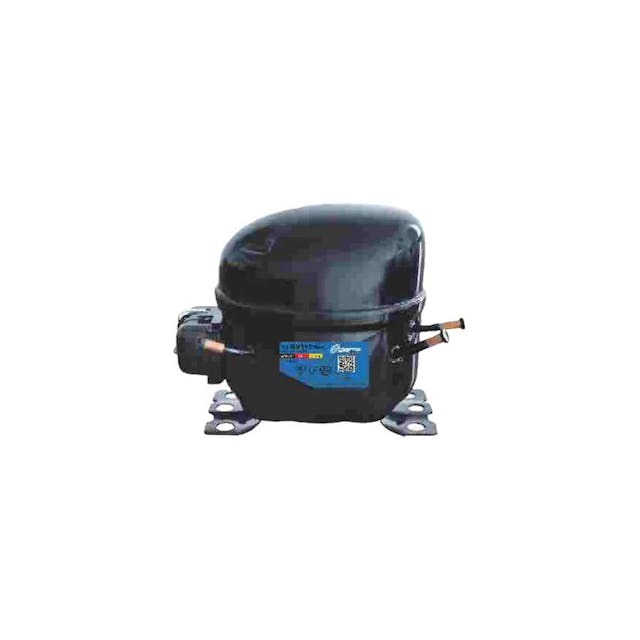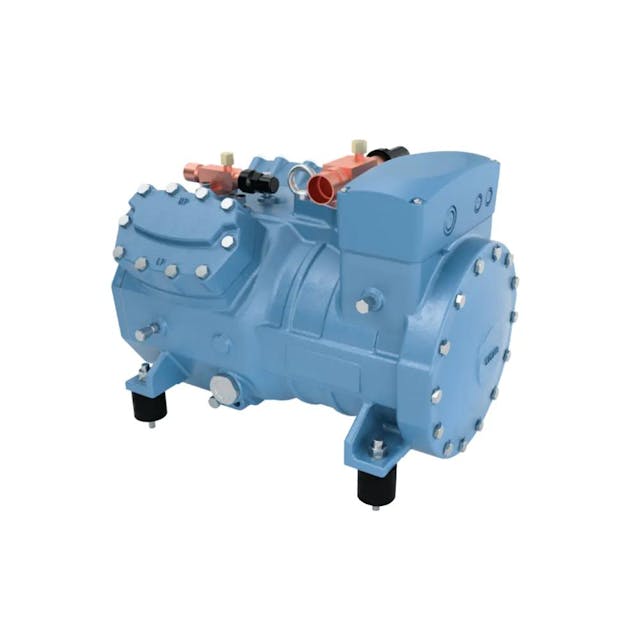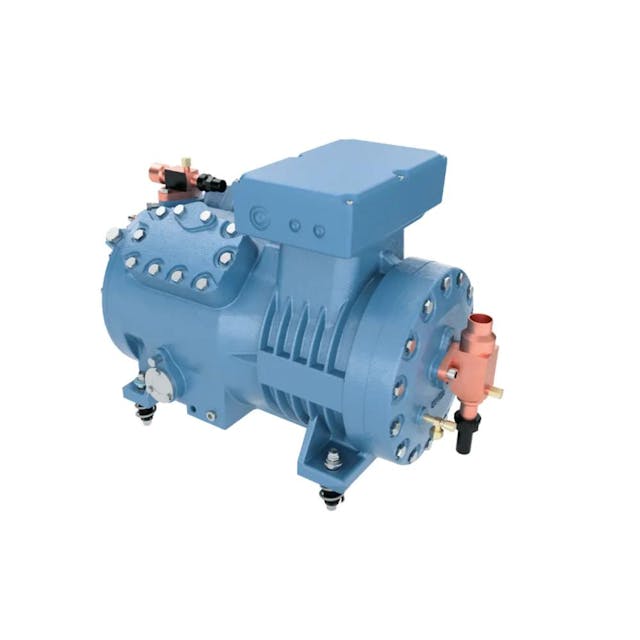
Comptek hermetic compressor MALQD65UHM
medium temperature, R290, 6,5cm³
The compressor, or refrigeration compressor, is the basic element of the entire refrigeration system. Thanks to it, the refrigerant can circulate in the system. The efficiency of the installation depends on the operation of the compressor. It affects every other element in it. In this entry, we have tried to take information that will explain in detail why this aggregate plays such a key role. We will also clarify issues regarding the selection of a compressor for a refrigeration system.
The compressor forces refrigerant through each of the other refrigeration components, including heat exchangers and expansion valves. As a refrigeration unit, however, it is used not only to move the medium, but above all to compress it, i.e. to increase the pressure. The compressor compresses the refrigerant when it is in a gaseous state. This device, by sucking in a low-temperature and low-pressure medium, compresses it to high pressure through the work done on it, while increasing its temperature. The type of gas transformation that takes place in the compressor is called polytorpe, i.e. a transformation in which the pressure, volume and temperature of the gas change. The specificity of this transformation says that with an increase in pressure and a decrease in volume, there will always be an increase in temperature.
Each of the compressors has one, the same purpose - to increase the pressure of the refrigerant. However, different types of compressors achieve it in different ways. Below we have described how the compressors work, divided according to the principle of operation.
Positive displacement compressors are those whose operation is based on cyclic pumping of the refrigerant in a closed, shrinking working space. We divide them into: piston and rotary.
Flow compressors are those in which the refrigerant is accelerated in the inter-blade channels of the rotor, which causes its increase in kinetic energy (including speed). The increase in energy is converted into an increase in pressure by reducing the diameter of the cylinder. These types of compressors are used only in high-power devices, e.g. jet aircraft engines
Positive displacement compressors are the most common in refrigeration. They are used in the refrigeration industry practically from the beginning of its existence. Thanks to the simple structure and simple principle of operation, they are cheaper, and at the same time they are characterized by high efficiency. These are compressors adapted to work with many refrigerants, and the availability of many variants of such compressors guarantees the possibility of matching them to any refrigeration system, regardless of its size or the requirements it poses. Due to the uncomplicated design, operating costs are lower, and in the event of a failure - service costs. These devices can be used as compressors for refrigerated counters, refrigerators, freezers, ice cube makers and much more.
In addition, there are three types of construction among reciprocating compressors, which determine the way of connecting their engine with the working body (piston, compressor) and accessibility to other components of the refrigeration unit:
A very important operating element is the lubrication of the compressor. The oil in the installation is to ensure good lubrication of all rotating and sliding elements, and it should also dissipate heat from thermally loaded elements. Oil and refrigerants are mutually soluble, so oil should be continuously fed back to the compressor from the refrigerant. For this purpose, e.g. appropriate inclination of the lines, or oil separators. Blue Refrigeration's offer includes a wide selection of oil separators that will perfectly ensure the proper operation of the refrigeration compressor. For example, there is a hermetic oil separator BLR/A-W55833 (3/8”ODF) adapted to work in temperatures from -10oC to -130oC, with a working pressure of 33 bar.
When selecting a compressor for a refrigeration system, we may encounter various parameters describing their operation. First of all, these are the way of operation (e.g. reciprocating) and the construction of the compressor (e.g. hermetic). Each technical specification of a refrigeration compressor will also have a lot of additional information. A list of the most important parameters to consider when choosing a compressor can be found below (discussed based on reciprocating compressors):
In addition, important information is: what refrigerant the compressor works with and at what temperatures it can work. It is worth remembering that at different operating temperatures, compressors, like any device, have different capacities.

medium temperature, R290, 6,5cm³

medium temperature, R290, 15,8cm³

with capacity control option, 4-cylinder

with capacity control option, 6-cylinder

2-cylinde

low-temperature, R600, 7,5 cm³